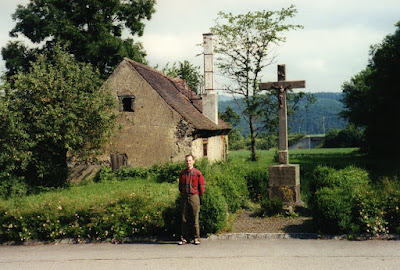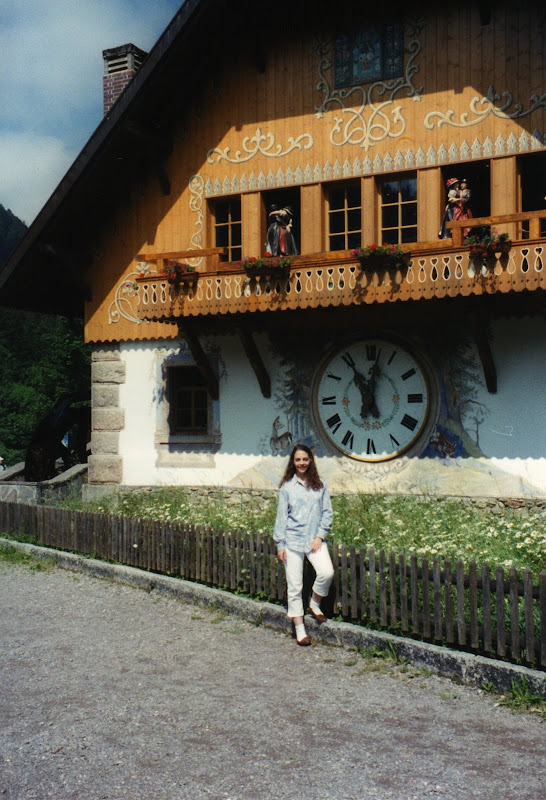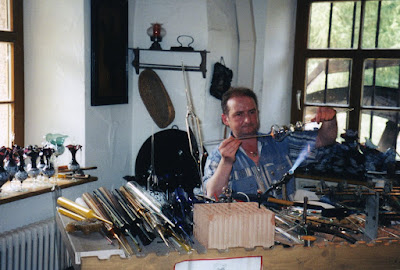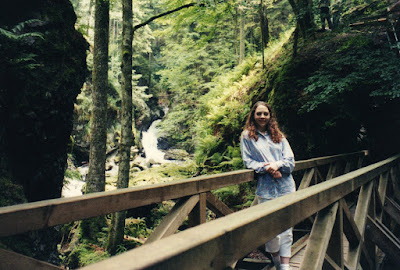
From Schaffhausen, we re-entered the southwestern part of Germany. That night we camped along the slow-flowing Rhine, and the next day explored the Black Forest. Steep mountains, thick with woods, give character to this birthplace of Grimm's Fairy Tales and cuckoo clocks. Our plan was to enjoy all that the area had to offer, experiencing both its unique culture and natural wonders.


Our first stop after awakening was St. Blasien, a small village in the mountains of the Black Forest. The highlight of St. Blasien was the domed abbey. Benedictine monks built this structure between 1772 and 1783, and completed it with one of the largest domes in Europe. The building is gorgeous, and the architecture and ornamentation are the most tasteful I saw in a church on our trip.

The inside of the dome is carved from white marble, with a beautiful mural at its apex. The building and the entire grounds were clean and well kept up, giving it a fresh, almost new atmosphere.


Bright flowers had been placed at the head of the room, and along the walls stood art depicting saints in browns and whites. A well-dressed man approached us and told us that in a half hour a service would be held, and afterwards there would be no more looking about. We left the abbey before the service started, and were on our way.


We drove past Lake Titisee, and into the Himmelreich Valley. Because of its proximity to the Alps, this area within the Black Forest is mountainous and picturesque. Cuckoo clocks come from this region, as have many great scientists.

This glass-blowing shop in Breitnau is built to resemble a giant cuckoo clock. Every half-hour a bell chimes, music plays, and life-sized wooden figures come out and dance.


In the shop, a master glassblower demonstrates his craft amid the numerous glass souvenirs available for purchase. Jenny and I bought a beautiful hand blown Christmas ornament here, which almost made it home before shattering in our backpack in Paris. The Hofgut Sternen Hotel, next-door to the glass-blowing shop, boasts on its wall (in German) that Marie Antoinette spent a night there, and behind the shop is a path leading to several waterfalls, one of which was at the top of this page.

From there, we drove to Todtnauer Village, and started a hike to another waterfall in the Black Forest. On the mountainside facing the village, ruins resembling the foundations of ancient castles trace out great circles. At the base of the opposing mountain in Todtnauer sits a beautiful church with two steeples. Behind the church a pathway leads to the Todtnauer Waterfall, the tallest in Germany. After following our guidebook's recommendation to hike to the waterfall beginning at the church, we found that the last segment of the pathway was inaccessible. Presumably, the recent hurricane had destroyed several bridges and strewn trees across the pathway. We began to skirt the mountain, looking for another route, then shot straight up the mountainside and finally arrived at the falls.


The hike was well worth the effort. The area was cool and refreshing, dappled with sunlight.

The waterfall itself cascades delicately down the mountainside over quite a distance, making the falls too big to capture in a single picture. Hiking down from the falls, we found a snack shop crowded with souvenir booths, right on the road from Todtnauer, and much closer to the waterfall than the church where we started. David and I sprinted down the main road to retrieve our car in Todtnauer, while our wives waited above for our return.
No comments:
Post a Comment